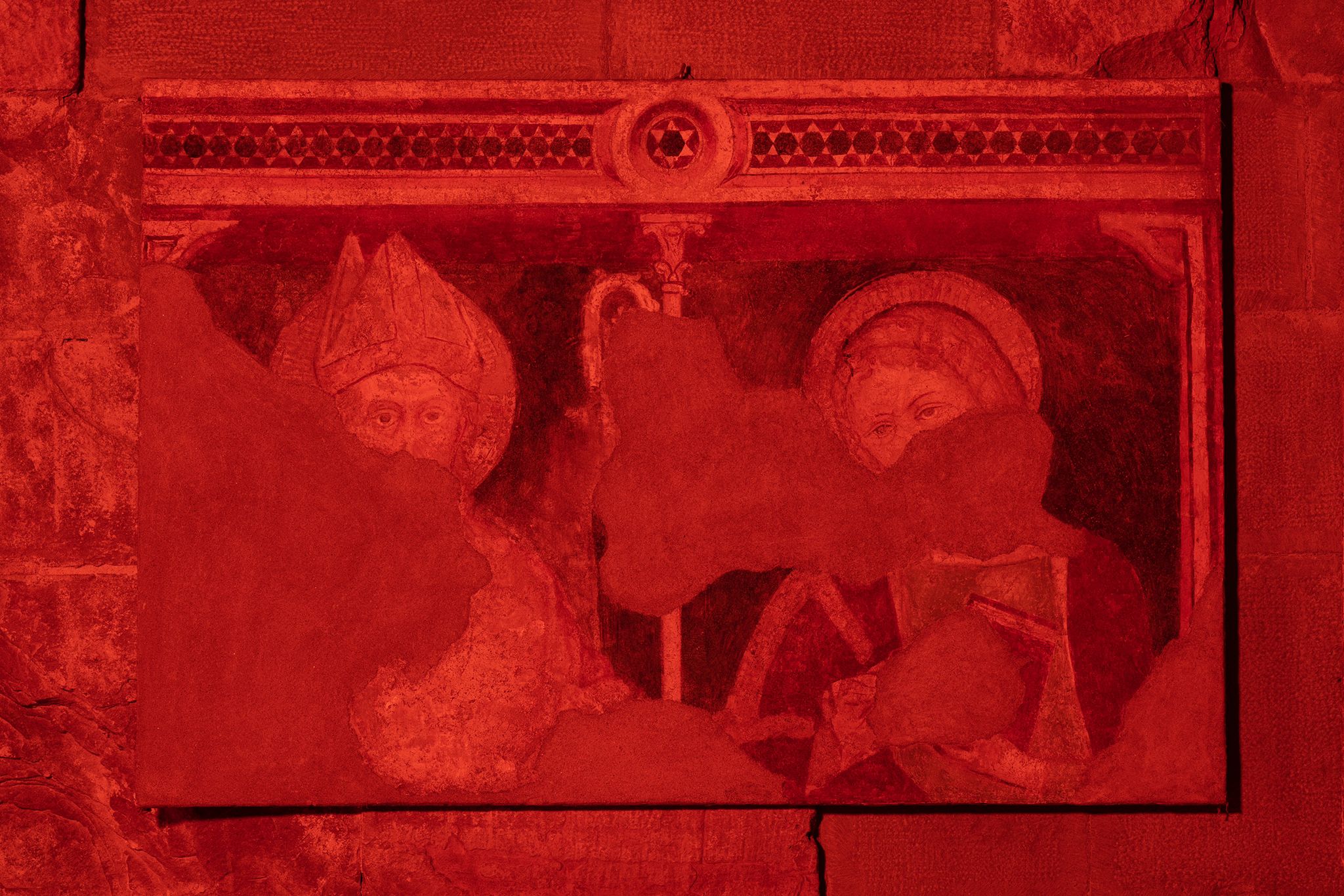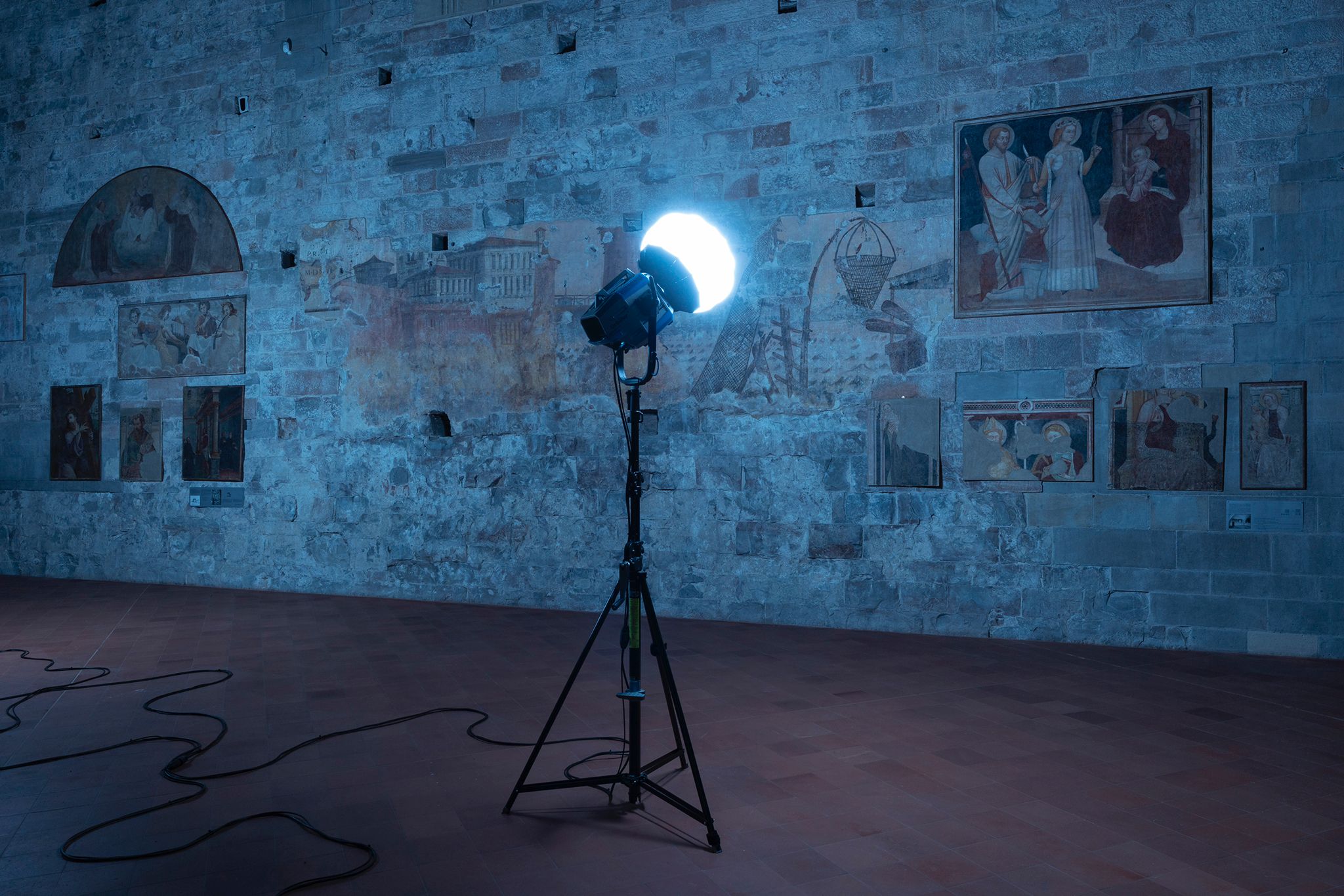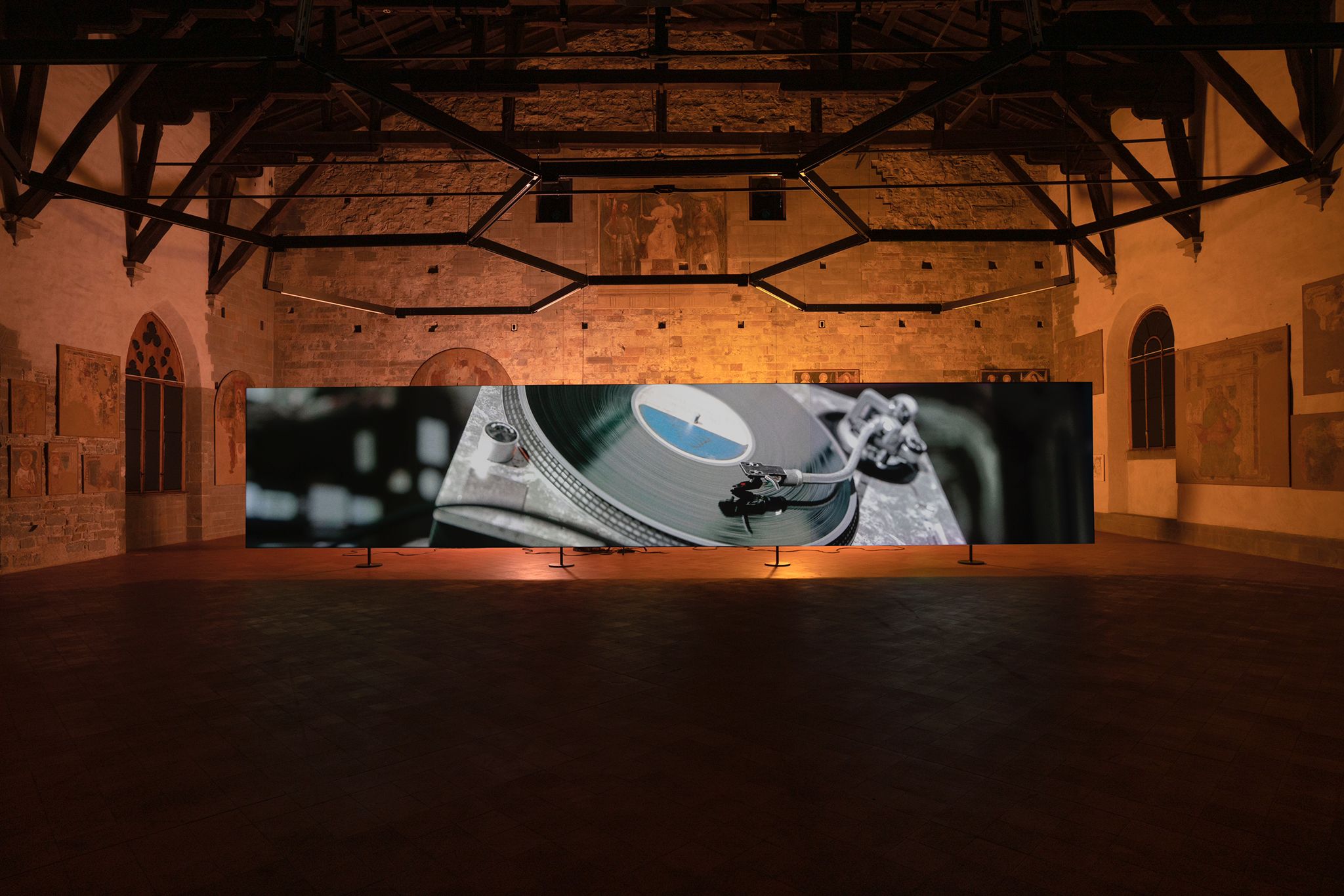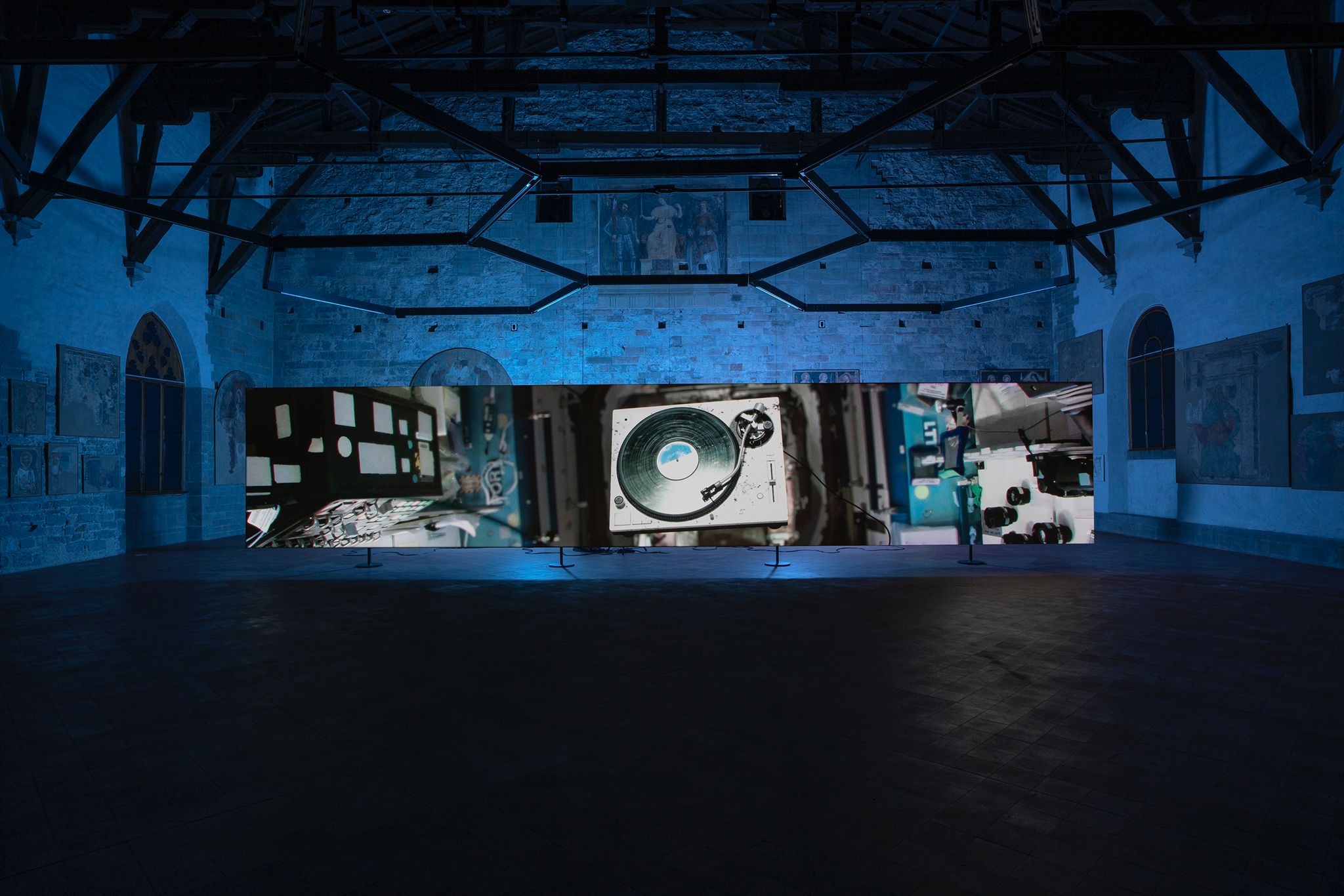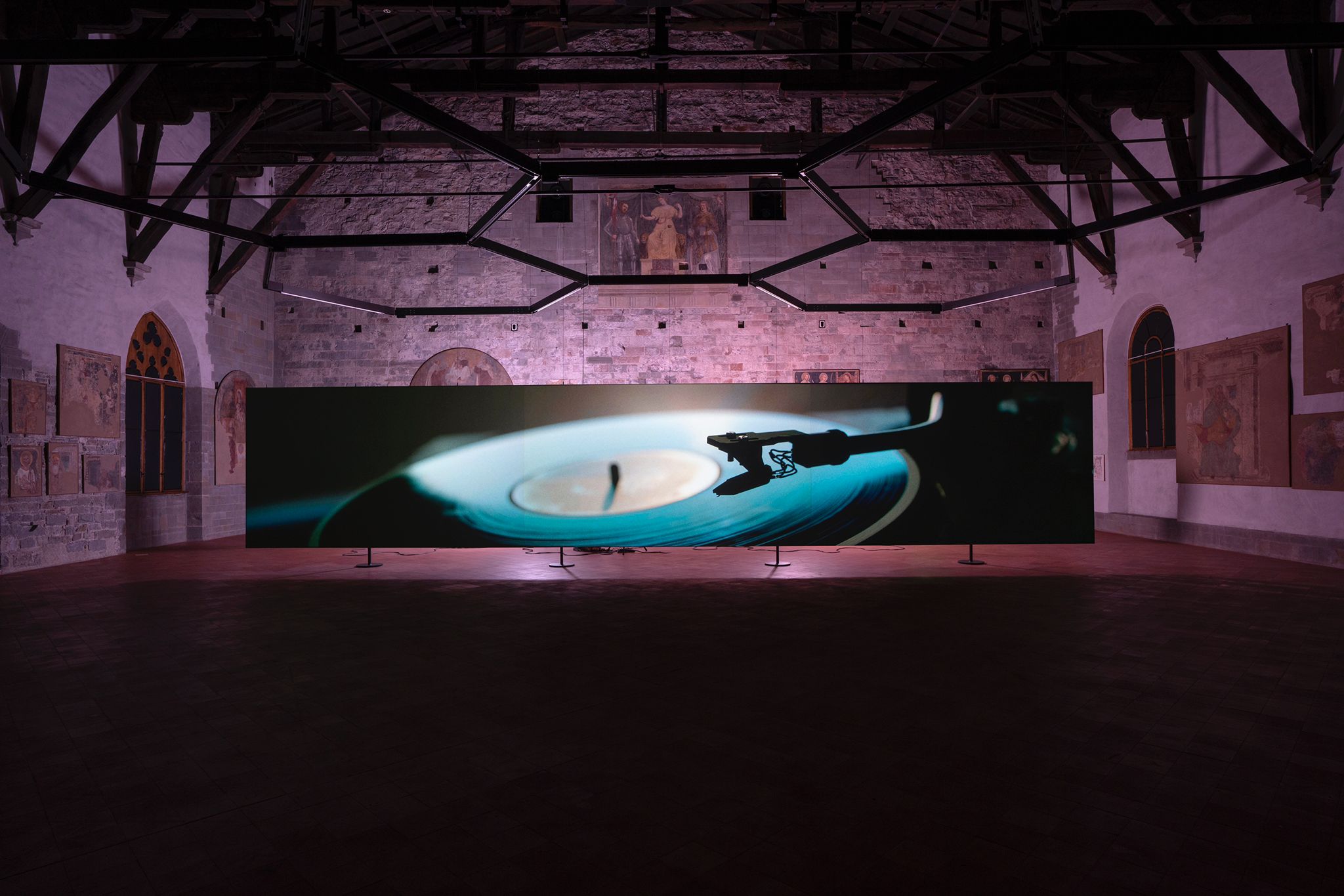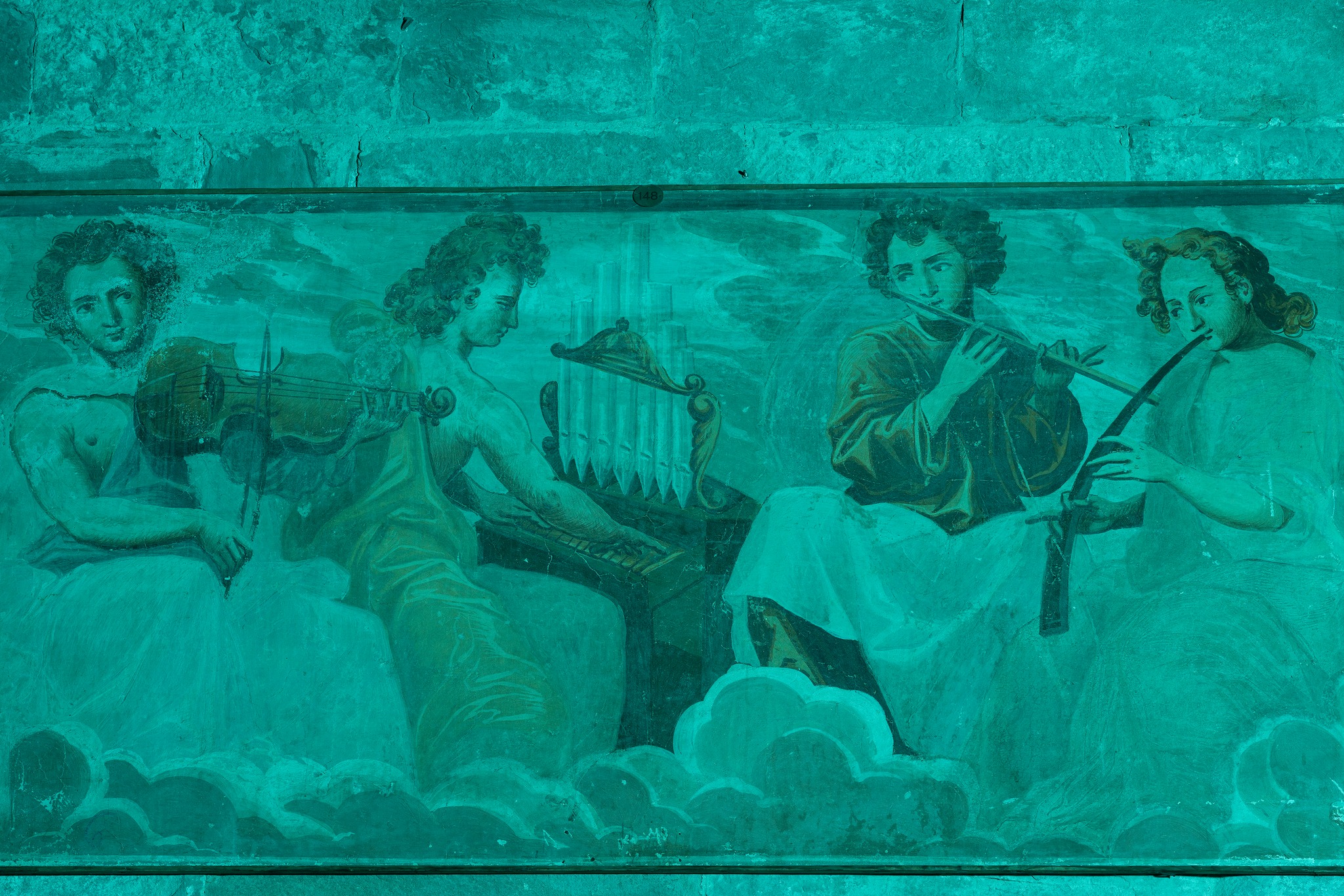Anri Sala. Transfigured
For the fifth year in a row, GAMeC – Galleria d’Arte Moderna e Contemporanea di Bergamo returns to the prestigious Palazzo della Ragione with a new exhibition by Anri Sala, the celebrated Albanian-born artist, who has created a thoughtful dialogue with the iconic Sala delle Capriate based on his most recent film and sound installation: Time No Longer.
Adopting an operating method exploited previously on other occasions, Sala interprets the architectural context “not as a mere container but as an active organ.” In the artist’s view, every physical space may enshrine values and memories that, from time to time, interaction with the artwork may reactivate. In the case of the Sala delle Capriate, this dynamic is further developed (with a sort of amplification of the effect) in relation to the centuries-old history of the building—the first municipal palazzo in Italy, then transformed into the Palace of Justice under the Republic of Venice—and the ancient frescoes it contains.
Projected onto a 16-meter long suspended screen, Time No Longer focuses on the image of a record player floating in a space station. Anchored only to the electrical power cable, the turntable plays a new arrangement of Quartet for the End of Time: the composition by French musician Olivier Messiaen, considered to be his most famous musical work, composed in captivity. During World War II, Messiaen (1908-1992) was captured in Verdun and taken prisoner in a German camp. It was during this time that he wrote Quartet for the End of Time, presenting it for the first time in 1941—together with three other musicians who had also been imprisoned—before an audience of only prisoners and guards. In particular, for the creation of Time No Longer, Sala drew inspiration from the quartet’s only solo movement, “The Abyss of the Birds,” written for clarinet and played by his Algerian comrade and musician Henri Akoka.
The dimension of solitude and constraint of Henri Akoka’s clarinet is echoed by the story of Ronald McNair’s saxophone. In 1986, McNair, one of the first black astronauts to reach space and a talented professional saxophonist, planned to play and record a solo on board the Space Shuttle Challenger. This would have been the first original piece of music recorded in space had the spacecraft not disintegrated just seconds after liftoff, tragically killing all the astronauts on board. A technological jewel, the shuttle thus displayed all its tragic fragility, evoking the vulnerability of Messiaen’s prisoner status.
In collaboration with musician André Vida, and sound designer Olivier Goinard, Anri Sala thus creates a duet between two instrumental voices: a performance without a performer where the clarinet merges at times with the saxophone, uniting two moments distant in history and time, but joined by a profound sense of solitude and at the same time one of determination and great will. The musical composition constitutes a soundtrack of intention, alluding to McNair’s planned but never executed recording.
The suspended film and the darkness of the Sala delle Capriate evoke the absence of light and gravity in the universe, the dimension of emptiness in which the record player floats. In the room, the darkness is interrupted at times by flashes of light from lamps positioned to the back of the screen which, following the rhythm of the music, light up the room and, along with it, the paintings and frescoes on the walls. The figures portrayed—among others the Virgin Mary and the city’s patron saints Alexander and Vincent as well as the figure of Justice, and in particular the four minstrel angels who, while intent on playing their instruments (a viola, a cornet, a flute and an organ) appear to dialogue with the four musicians from the Quartet for the End of Time—thus testify to a humanity that exists no more, linking various timeframes, crossing the past, present, and future.
Adrift in boundless space, as 16 dawns and 16 sunsets follow on from one another, the record player thus finds a way to remain anchored to time and history, even though it too is a prisoner of its own solitude, just like McNair and Messiaen.
On the occasion of the Anri Sala exhibition, curated by Lorenzo Giusti and Sara Fumagalli, the first volume of a new series of essays will be published by NERO and GAMeC, linked to the exhibition projects staged at Palazzo della Ragione in Bergamo. The author of the first essay will be the French philosopher and musicologist Peter Szendy.
Palazzo della Ragione, Bergamo
09.06-16.10.2022.
Photo: Lorenzo Palmieri for GAMeC BergamoDate
May 28, 2022
